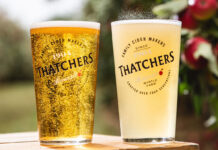Firms offer advice on attracting younger customers

MANY people have a lot of things to say about the needs and wants of the so-called millennial generation, but beyond smartphones and Instagram are today’s young adult drinkers any different from their predecessors?
Yes and no seems to be the answer from drinks firms who, in their assessment of the young adult market, have highlighted how operators can tap into contemporary trends that appeal to this demographic, while being mindful of the financial constraints that have been a top concern for this age group through the generations.
Amy Giacobbi, marketing manager at CWF, the firm behind the LIXX range of shot-style drinks, said that with the cost of college and university “spiralling” every day, “students need to be mindful how they spend their spare cash”, and licensees should keep this in mind.
“Those in the on-trade should think about who this student audience is and align their ranges with this knowledge, and also consider the variety of celebratory occasions that might appeal to them,” said Giacobbi.
Low cost may be crucial to attracting young adult drinkers, but Giacobbi reckons that it’s not enough for publicans to simply stack it high and sell it cheap.
“Licensees should consider how they can stand out from their competitors, not just in terms of price but also their overall offering,” said Giacobbi, who suggested operators consider sporting events, fancy dress parties and end of term get togethers as fertile ground for student events.
Consider the variety of events that might appeal to them.
When it comes to building a drinks range that will keep young adult drinkers coming back to an outlet, Catherine Conaghan of Diageo highlighted one spirits category in particular as a sure fire winner.
“Scotland is a vodka nation – vodka holds a 34% share of all spirits sold in the Scottish on-trade, compared to blended whisky at 13% and gin at 7%,” said Conaghan.
Ashley Moore, category development manager at Diageo, elaborated, suggesting that mixed drinks could be utilised to shore up wet sales, particularly in food-led outlets.
“When consumers visit casual dining outlets for a drink-led occasion, the most popular drink choice is spirits, with cocktails also massively over-indexing versus the GB average,” said Moore.
“Cocktails with food are more popular in casual dining brands than in the average outlet, highlighting an opportunity for spirits to capitalise on food and drink pairings.”
Amy Burgess of Coca-Cola European Partners (CCEP) agreed on the appeal of mixed drinks, suggesting these are particularly popular among younger drinkers.
“Soft drinks have always been popular amongst younger adults and students, whether served in their original form, or as components in mixed drinks, cocktails or mocktails,” said Burgess.
“Sales of soft drinks are also benefiting from the fact that many young consumers are opting not to drink alcohol. Statistics show that one in five people are now choosing to be teetotal, suggesting that the category is arguably more important to licensees than it’s ever been before.”
























